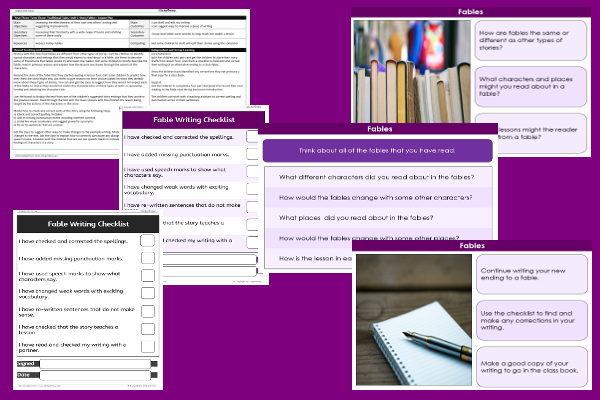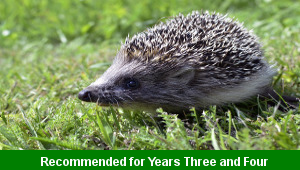Lesson Five – Fable Writing

This English teaching pack for Key Stage Two gets the children to edit and redraft an alternative ending to a story fable to teach the reader another moral lesson through the narrative sequence of events and plot conclusion.
The class can practise using a checklist to make corrections to their writing before publishing in a class book to present fables that seek to teach moral lessons to readers.
Download this teaching pack including a lesson plan, classroom activities and an interactive presentation to edit and redraft an alternative ending to a story fable to teach the reader another moral lesson through the narrative sequence of events and plot conclusion
Activities in this teaching pack include a worksheet to identify and make corrections and improvements to an alternative ending to a story fable to show changes to the sequence of events and check for the use of the correct punctuation in dialogue sentences.
The interactive presentation gets the children to explore how to edit and redraft an alternative ending to a story fable to teach the reader another moral lesson through the narrative.
This lesson is part of an English scheme of work to get the children to explore and describe some of the different characters settings and events that can feature in traditional fables, identify families of words with common spellings and practise punctuating direct speech in sentences. There are teaching activities for shared learning, differentiated worksheets to support independent learning and interactive presentations to introduce concepts and key skills.
-

Classic Animal Stories
Investigate the structure and content of classic works of fiction by significant authors with animals as the main characters
-

Cities, Towns and Villages
Research and present the history of a range of different buildings and people that are part of the local community using a school exhibition
-

Recycling
Research and present some of the benefits and disadvantages that can be produced when recycling different materials at home and in school
-

Viking Pots
Develop and refine a range of different art and design techniques when working with clay to make pots that represent Viking culture and traditions
